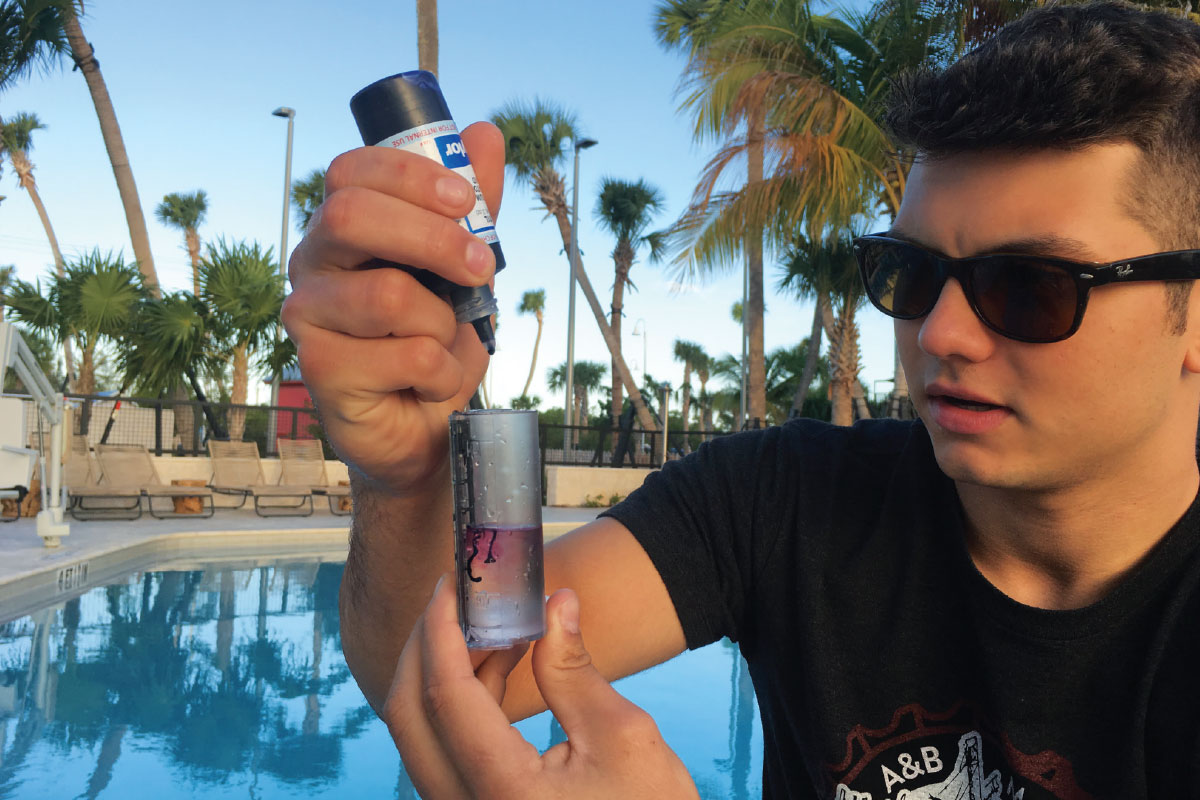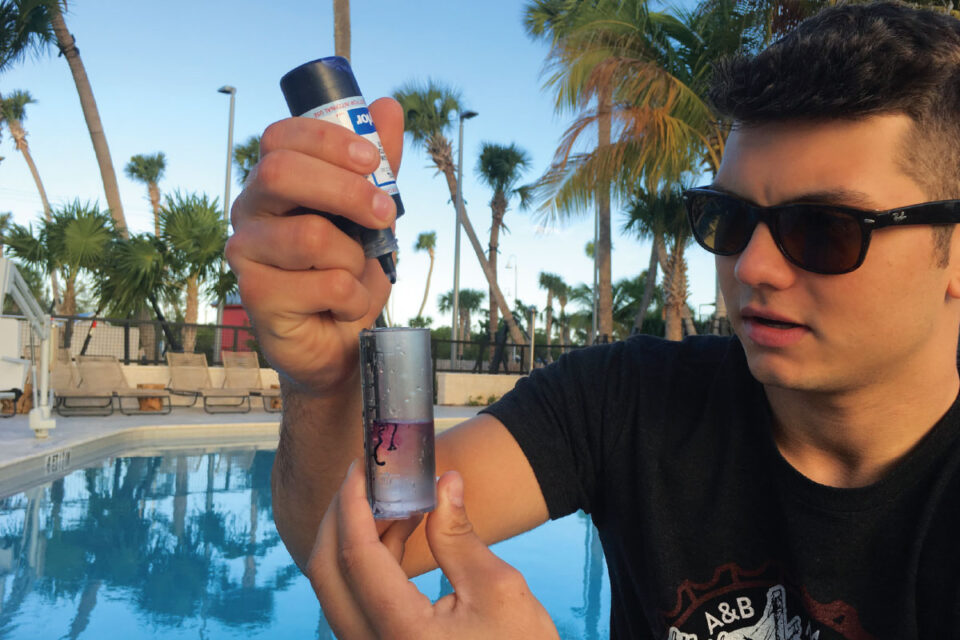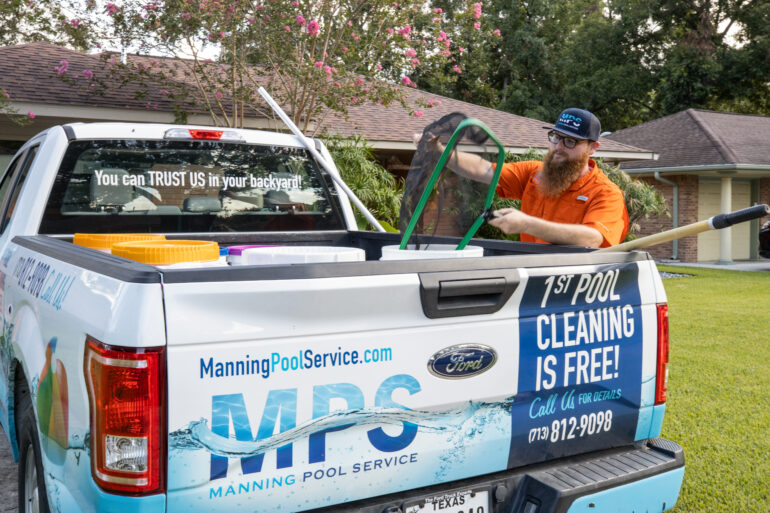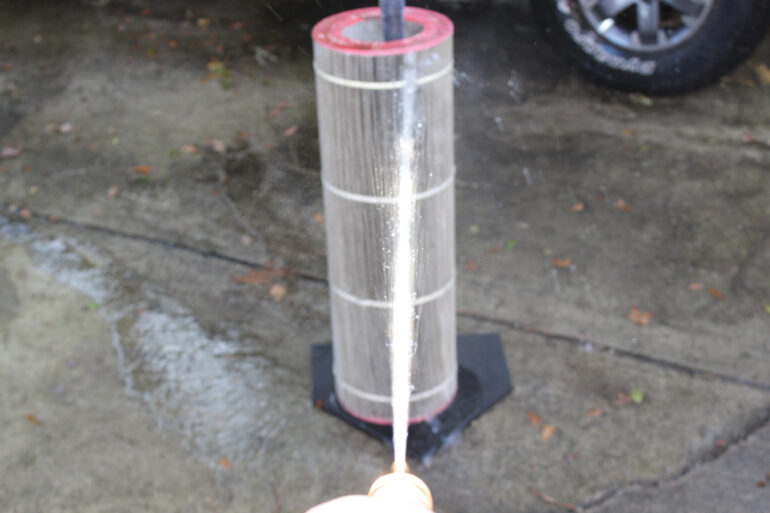Tuning In to Test Kits


The subject of test kit interferences and whackadoo results has been discussed ad nauseam. The frequency of this topic is beneficial, because knowing your chemistry results are accurate is pretty darn important. We don’t, however, see a lot of the ancillary information these oddball findings bring to light. What is initially observed as erroneous may provide detail on a previously unknown problem. When strange results surface, we should be asking, “What else is this telling me?”
High Chlorine Levels
We know that a high chlorine level can cause the results of a DPD (N, N-diethyl-p-phenylenediamine) test to bleach. Liquid reagents will decolorize at 10 ppm of chlorine and powder reagents (tested with FAS DPD) at more than 25 ppm. You may see a flash of pink and then to clear. Sometimes it’s not easy to tell if the flash was there, no matter how many times you repeat the test.
The typical test kit sold to homeowners uses a chemical called orthotolidine (OTO) to test for chlorine. OTO does not bleach in the presence of high chlorine. Instead, it turns brown. When in doubt, keep a bottle of OTO on hand to determine whether or not a chlorine level exists.
The active ingredient in DPD reagent No. 2 is a powerful oxidizer. Adding an oxidizer to water with a high level of manganese may turn the water in the test block pinkish-purple by oxidizing the manganese, a false positive result for FAC. You see the same reaction in a manganese rich swimming pool upon adding a dose of chlorine or hydrochloric acid.
Phenol red, the chemical we use to test pH, can determine a pH level between 6.8 and 8.2. At a chlorine level of more than 15 ppm, phenol red becomes chlorophenol red, which is only capable of determining a pH level between 4.8 and 6.8. When this occurs, water with a pH of 6.8 or higher, including every level in your acceptable range, will turn the solution to a brilliant violet color.
So, if DPD reagents bleach at 10 ppm and phenol red becomes chlorophenol red at 15 ppm, we can determine that our chlorine level is between 10 ppm and 14 ppm if our chlorine test bleached out but we can still get an accurate pH reading. This can help us calculate the dose of thiosulphate needed to bring the chlorine level back into range.
pH and Total Alkalinity
If we were to get a yellowish-green result on a total alkalinity test versus the normal pink, this would indicate interference from chlorine (one drop of sodium thiosulphate reagent neutralizing approximately 3.5 ppm of chlorine). The thiosulphate reagent has a pH of 9.6, so adding more drops than the directions call for will mess up your readings.
Turbulence will cause an increase in pH without affecting the total alkalinity. With a pH that is constantly climbing and frequent additions of muriatic acid to balance, the result is total alkalinity driven into the toilet. The agitation could be from a water feature, a spillover or water cannons. It may even be from the return jets as homeowners will often aim them toward the surface because they “like to see the water move.”
Calcium Hardness
I can explain the chlorine level, pH and total alkalinity being off a dozen ways. But the calcium hardness level can only be lowered by replacing water, either a partial or complete drain and refill. So, if the calcium hardness level drops and no one had drained or excessively backwashed water from the pool, this would mean your pool leaks. Most pools have an auto-fill, so there may not be a noticeable drop in the water level. The calcium hardness test results could be the first indication a pool has a leak (a drop in cyanuric acid could indicate the same).
The calcium hardness test is subject to other interferences. The first is called fading endpoint: No matter how many drops you add, you cannot get the color on the test to change from purple to blue. This failure to titrate is likely caused by a high level of iron in the water, which can result in brownish-red water and/or staining, but it could also be due to a level of manganese, covered above.
The second calcium conundrum is clumping. While titrating, if we see that the purple in our colored sample starts to coagulate; this indicates the presence of magnesium hydroxide in the water. These milk-of-magnesia meatballs won’t interfere with the test result but could lead to problems if pH or total alkalinity spikes down the road. Magnesium hydroxide in alkaline water is a fairly decent flocculant. With a sudden spike in pH and/or TA, you may find a sudden appearance of an unknown white powdery cake-like precipitant across the floor of your customer’s pool.






